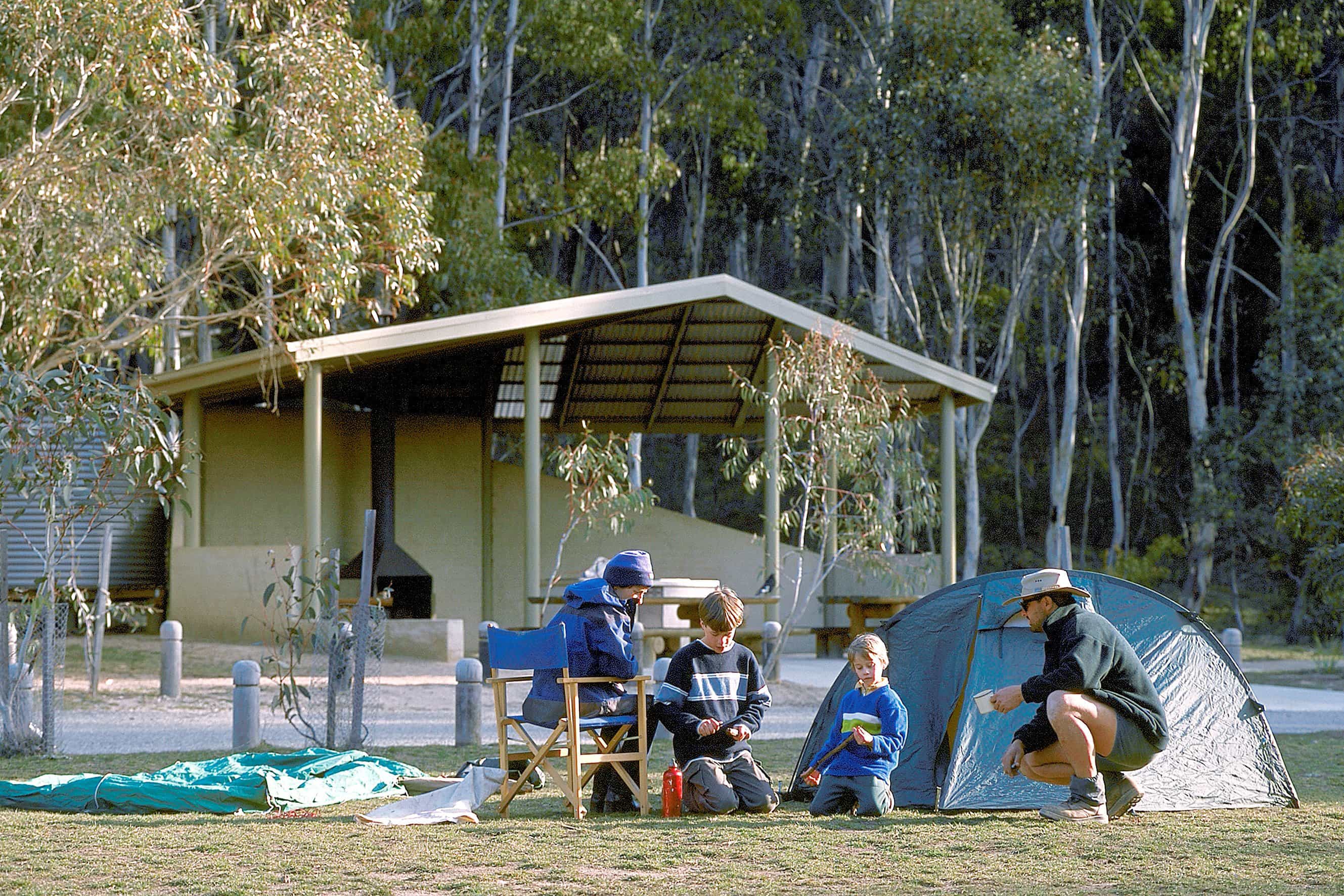The Australian Alps’ Namadgi National Park, is less than 4 hours drive from Sydney, and offers
a world of calm forest, stunning views, and rich Indigenous Australian history.
With a plethora of activities, including hiking, birdwatching, abseiling, and camping, this wilderness location is the ideal place to escape and reset.
Established campgrounds in the area, are the perfect place to stay in a campervan, and allow you to immerse yourself in nature.
Table of Contents
Outdoor Adventure
Explore the Ngunawal people’s tens of thousands of years-old campsites, ceremonial stone configurations, and rock art locations. Then, follow the gold seekers’ and pastoralists’ footsteps. Cross-country ski the winter slopes, fish in the abundant waterways, or take a 4WD Camper to the peak of Mount Coree.
The scenery is to be admired, from the snow-gum trees, wet marshes, and vast open plains, which are covered with spectacular wildflowers during the spring. The native wildlife is captivating as well, with no shortage of kangaroos, wallabies, and northern corroboree frogs.
Enter the pristine Bimberi wilderness via the Yerrabi Walking Track, to see some of the least degraded eco-systems in the Australian Alps. Visit the Snow Gum and Alpine Ash woodlands along the Square Rock walking trail. Alternatively, go on a guided tour of the rapidly shifting landscape with a Namadgi ranger. Take a horseback ride on the National Bicentennial Horse Trail or the fire paths east of Old Boboyan Road. Mountain bike riding is a poplar activity on the numerous fire routes, as is climbing or abseiling the granite rock outcrops.
Cross-country skiing is available in the winter at Mount Franklin and Mount Gingera.
Indigenous History
View the historic campsites that the Ngunawal people built during the last Ice Age, complete with stone and animal bone pieces. Then see the historic quarries where people formerly collected stone for use in creating tools. To reach the rock carving locations of Yankee Hut Shelter, use the Yankee Hat Walking Trails. See the locations on Mount Kelly in which the Ngunawal tribe collected tasty nut-flavored bogong moths. Explore their ceremonial stone arrangements, which are located on Mount Namadgi’s upper summits.
Take a tour with a guide to see some of the more than 50 Ngunawal habitation sites in Namadgi. Travel the Birrigai Time Trail to Birrigai Rock Shelter, the country’s earliest Aboriginal site, in the close-by Tidbinbilla Nature Reserve. You may also explore Tidbinbilla Mountain, a holy initiation place for young Aboriginal males, and Bogong Cave, wherein tribes congregated to catch the bogong moths.
Graziers, Gold-Seekers, and Space Communication Stations
Throughout the valleys and on the hills that are today home to emus and kangaroos, the early pastoralists grazed sheep and cattle. Fences, yards, houses, and homesteads that still exist in the wide valleys where they settled in the 1830s can be used to trace their history. See then some of the Kiandra gold path that Gudgenby’s fortune hunters traveled in the 1860s.
Hike the Orroral Heritage Stepping Track between Honeysuckle Creek and Orroral Valley, the first location on the planet to receive photographs of Neil Armstrong walking on the lunar surface. These locations serve as the former Apollo satellite monitoring stations. Examine the memorial exhibit, then head to the Deep Space Communication Complex in the adjoining Tidbinbilla Nature Reserve to find out more information concerning Australia’s space missions.
Approximately 400 species of Australian birds, bats, and animals have made their dens, roosts, and homes in Nature’s Boarding House, a massive tree that may be reached by taking the Naas Valley to Horse Gully Hut Walking Track. Visit Naas Creek to see the resilient local fish Mountain Galaxias. Observe how the vegetation changes from low-lying woods and dry forest to soaring eucalyptus trees and fern gullies on the protected slopes. Kangaroos and wallabies may be seen grazing in the open grassland and frost hollows as you ascend, while Australian Paper Daisies will blanket the heaths of the highest summits.

Experience the magnificent wedge-tailed eagle’s aerial maneuvers or the tiny Australian Kestrel’s lingering over grassy regions in search of a meal.
Road Trips and Mountain-Views
Enjoy breathtaking 360-degree vistas by ascending Mount Coree via the Two Sticks Road across the top of the Brindabella Ranges. Alternately, follow the easy Annie Trail to a deserted campsite next to the Goodradigbee River. Take on the Mount Franklin Road all the way to the Bendora Dam service road at the Ginnini gate. Along with Old Mill Road and Warks Road, these roadways in the park’s northern section are particularly well suited for four-wheel steering. For the arduous ascent to Stockyard Spur, drive to Corim’s Dam. Go to Honeysuckle Campground, which is close to the site of the former Honeysuckle Tracking Station, if you’re bringing a campervan or simply wish to set up a tent.
Or you may base yourself at the Orroral Campground, which is along the Orroral Heritage Walking Track. You may embark on the Naas Valley to Horse Gully Hut trek from Mount Clear Campground.
Rock Climbing
It’s a rock climber’s paradise in the park with all the rocks and cliffs. The Booroomba Rocks are very well-liked. However, as guided tours in the park are not very popular, you’ll need to be seasoned and knowledgeable. Get engaged by getting in touch with a local rock-climbing organization like the Canberra Climbers’ Association. Located 25 miles (40 km) southeast of Namadgi National Park is Australia’s capital city of Canberra.
You have to explore Namadgi to learn about its Aboriginal history. You can further enjoy seeing amazing birds, picnic and fishing locations, and superb bushwalks with breathtaking scenery. If you want to hike in secluded places, rent a Personal Locator Beacon from the Namadgi Visitor Center. Take advantage of ranger-led walks or get away to the untamed Bimberi wilderness. Mountain biking and horseback riding are only allowed on authorized fire paths. For further information about the campgrounds, contact the Namadgi Visitor Center.




